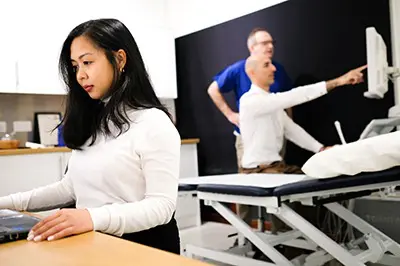What is obstetric ultrasound?
Obstetric ultrasonography refers to the deployment of ultrasound technology in the health evaluation of the mother and unborn baby during pregnancy. It can help to detect the baby's heartbeat, and position, and identify any pathology.
Diagnostic ultrasound is an imaging technique that was first used in 1957 in Glasgow and since then slowly but surely gained worldwide acceptance it has been the main diagnostic tool during pregnancy for the last 50 years.
What is a non-obstetric ultrasound scan?
Although most people will associate ultrasound with pregnancy, ultrasound is extensively being used to evaluate other human organs such as the liver and gallbladder. It is being used in gynaecology to evaluate the womb and the endometrium. In musculoskeletal; imaging is to evaluate joints, and muscles and to guide steroid injections. In vascular and cardiac imaging to examine the heart and blood vessels.
How is obstetric ultrasonography performed?
The most common ways obstetric ultrasound scanning is performed are:
-Transabdominal ultrasonography: This is the most common type of obstetric ultrasonography. A transducer is placed on the abdomen and moved around to obtain images of the developing baby.
-Transvaginal ultrasonography: This type of
scan is usually only performed early in pregnancy when a transducer is inserted into the vagina to obtain images of the developing baby.
What are the indications for obstetric ultrasonography?
Obstetric ultrasound is performed in order to assess maternal and foetal well-being. It can be performed as a routine screening procedure at the first prenatal visit or may also be performed later in pregnancy to assess for specific indications.
The most common indications for an obstetric ultrasound examination are:
Dating the pregnancy by measuring the crown-rump length
Assessment of foetal growth
Detection of multiple gestations
Evaluation of the uterine cavity
Evaluation of the placenta and fluid volume
Evaluation of the umbilical cord
Evaluation of foetal anatomy
Detection of fetal abnormality
Exclude
ectopic pregnancy
Ultrasonography can also be used to evaluate maternal pelvic organs and structures such as the ovaries and uterus.
The NHS recommends that all pregnant women have at least two scans during their pregnancy, one in early pregnancy at around 12 and an anomaly scan at around 20 weeks of pregnancy.
What are the contraindications for obstetric ultrasonography?
There are no known contraindications for obstetric ultrasonography. This means that the procedure can be safely performed on anyone, regardless of their medical history or current health condition.
What are the different types of obstetric ultrasounds?
There are three main types of obstetric ultrasound technology:
2D ultrasonography: This is the most common type of obstetric ultrasonography. It uses high-frequency sound waves to create a two-dimensional image of the fetus and placenta.
3D and 4D ultrasonography: These types of scans create three-dimensional (3D) or four-dimensional (4D) images of the developing baby. 3D scans and 4d scans can be performed for medical purposes and/or entertainment purposes.
The 3D scan will generate a static three-dimensional image of the fetus, while 4D ultrasonography generates a four-dimensional image that shows movement in real time.
Doppler ultrasonography: This type of scan can be used to assess blood flow in the vessels leading to and from the developing baby.
When should you have an obstetric ultrasound?
Your first
scan in a normal pregnancy, in the UK, is offered by the NHS around week 12 and it is called a dating scan.
Pregnancy scans however are available from week 5 of your gestation by private ultrasound providers or by the Early Pregnancy Unit (EPU) if an abnormality is suspected.
How long does a pregnancy ultrasound take?
A pregnancy scans normal last around 10-20mins.
How do I prepare for an obstetric ultrasound?
Preparation for a baby scan depends on your gestation age.
For an
early pregnancy scan in the first trimester, you might need to have your bladder full.
No preparation is required for scans in the second and third trimesters.
it is recommended however to wear loose clothing that can easily be lifted or removed in order to expose your abdomen.
What is the limitation of pregnancy scans?
In some examinations, image quality and therefore diagnostic accuracy might get impaired by the patient's body habitus or the position of the baby.








